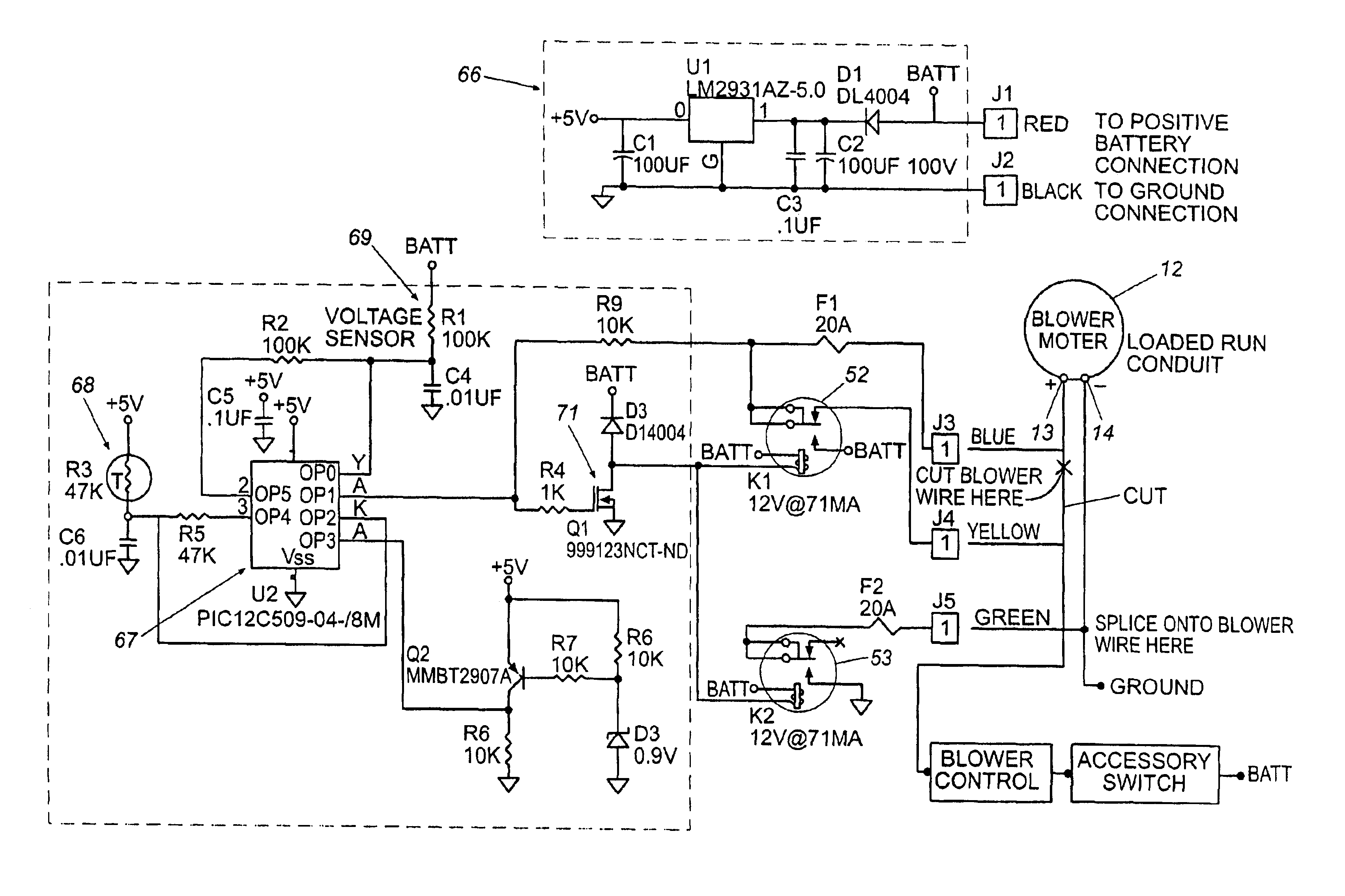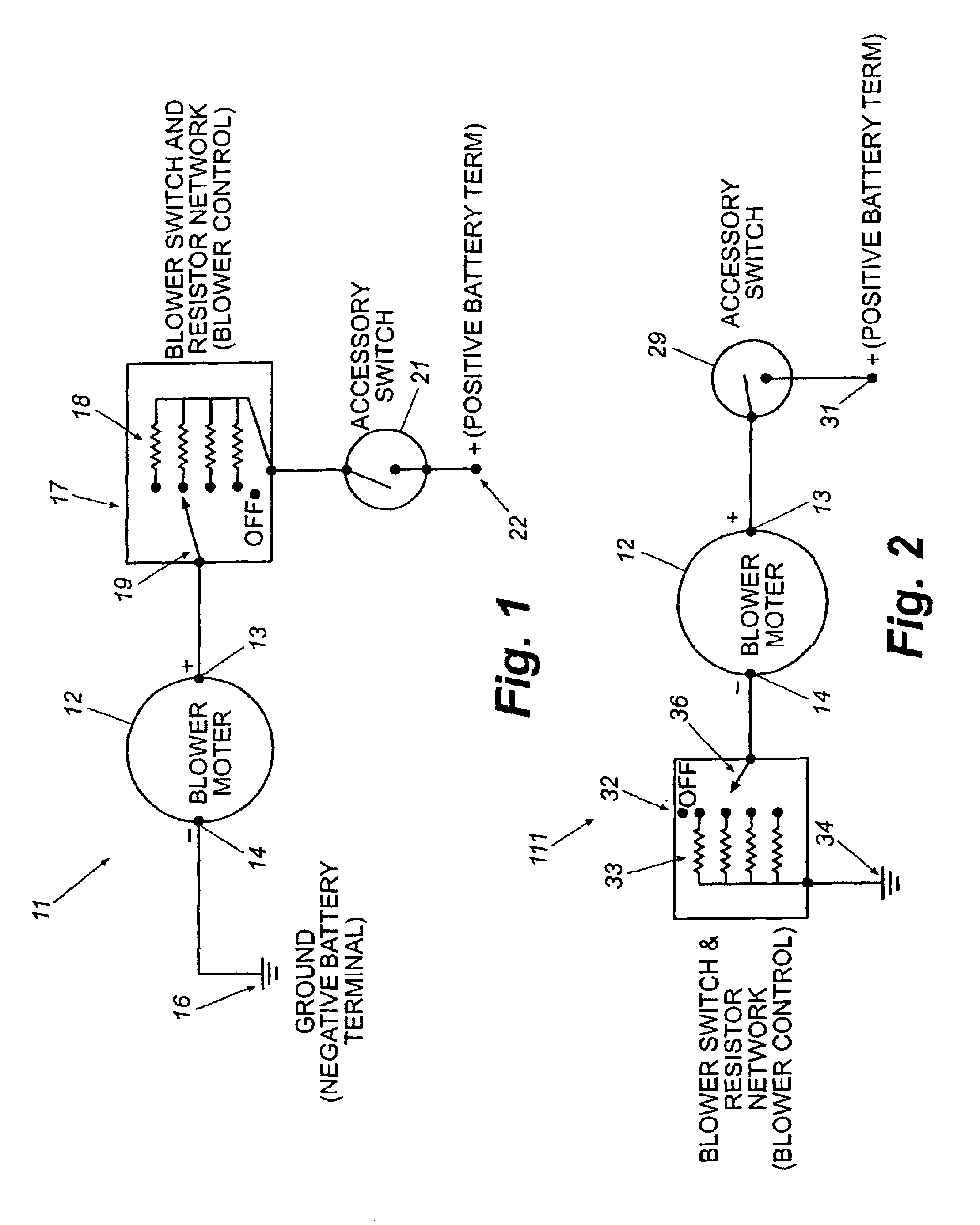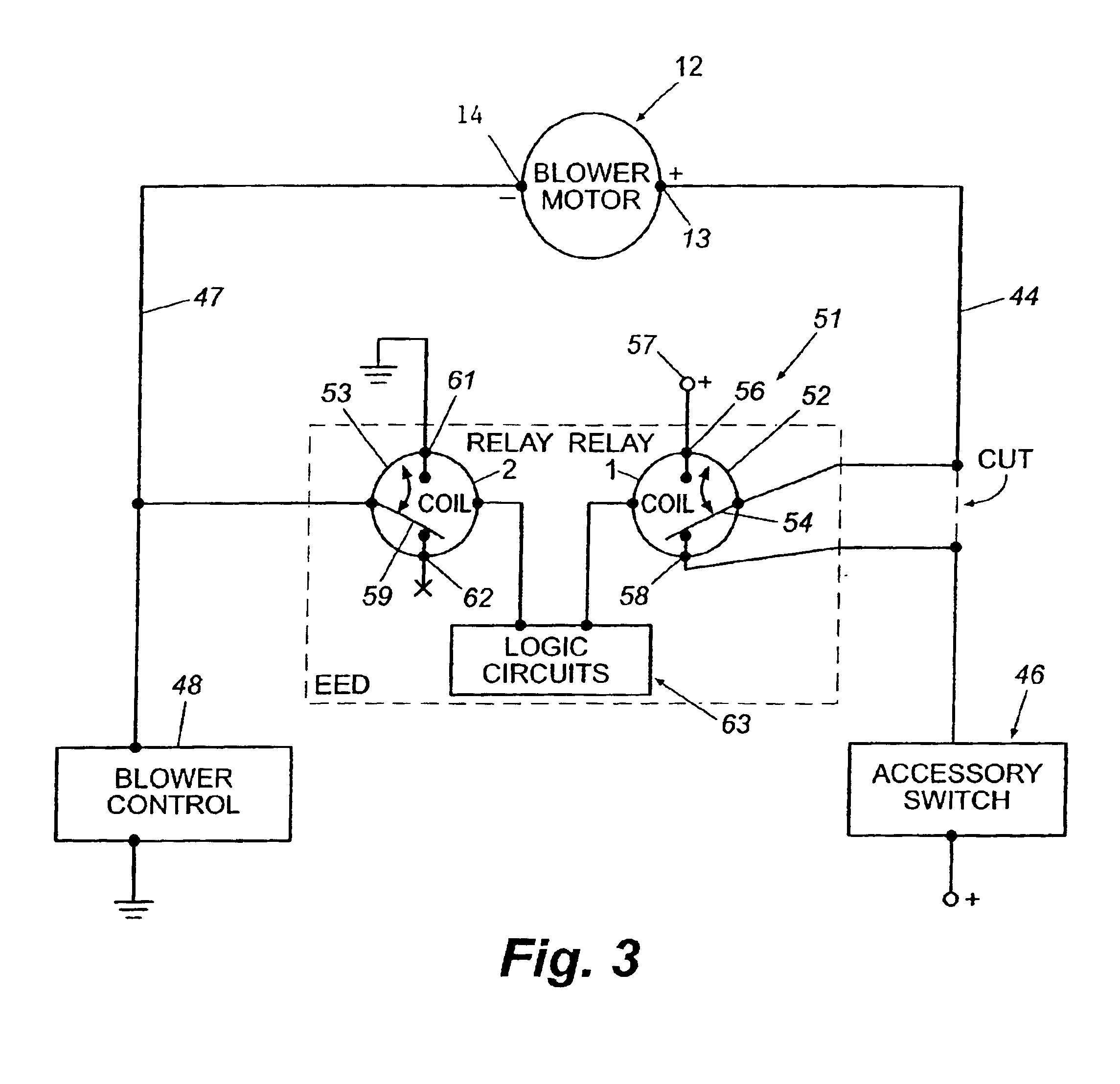Electronic evaporator dryer for eliminating odors in vehicle air conditioning systems
a technology of evaporator dryer and evaporator, which is applied in the direction of heating types, instruments, domestic cooling apparatus, etc., can solve the problems of stale and unpleasant odor, slow evaporation of condensed water on the evaporator, and stale and dank atmospher
- Summary
- Abstract
- Description
- Claims
- Application Information
AI Technical Summary
Benefits of technology
Problems solved by technology
Method used
Image
Examples
Embodiment Construction
Referring now in more detail to the drawings, in which like numerals refer to like parts throughout the several views, FIGS. 1 and 2 are presented to illustrate two common types of wiring and blower control schemes 11 and 111 used in vehicles for controlling the blower motor of the vehicle's air conditioning system. FIG. 1 illustrates a “positively switched” blower motor control system 11 and FIG. 2 illustrates a “negatively switched” blower motor control system 111. Referring to FIG. 1, a blower motor 12 of an automotive air conditioning system has a positive terminal 13 and a negative terminal 14. The negative terminal 14 is connected directly to ground 16. The positive terminal 13 is connected to the positive battery terminal 22 through a blower switch and resistor network 17 (or blower control circuit) and through the accessory or key switch 21 inside the automobile. The blower control circuit 17 includes an array of resistors 18 and a manually operated control knob 19 within th...
PUM
 Login to View More
Login to View More Abstract
Description
Claims
Application Information
 Login to View More
Login to View More - R&D
- Intellectual Property
- Life Sciences
- Materials
- Tech Scout
- Unparalleled Data Quality
- Higher Quality Content
- 60% Fewer Hallucinations
Browse by: Latest US Patents, China's latest patents, Technical Efficacy Thesaurus, Application Domain, Technology Topic, Popular Technical Reports.
© 2025 PatSnap. All rights reserved.Legal|Privacy policy|Modern Slavery Act Transparency Statement|Sitemap|About US| Contact US: help@patsnap.com



